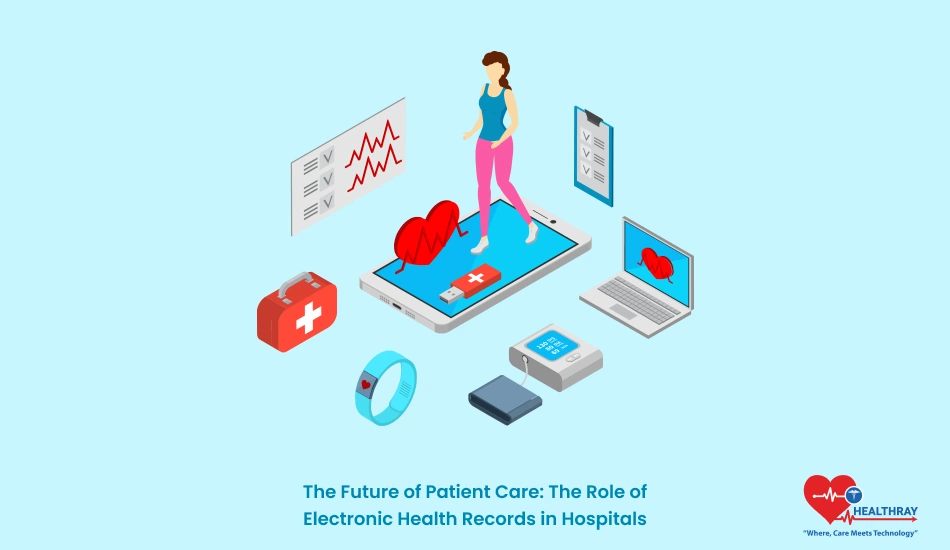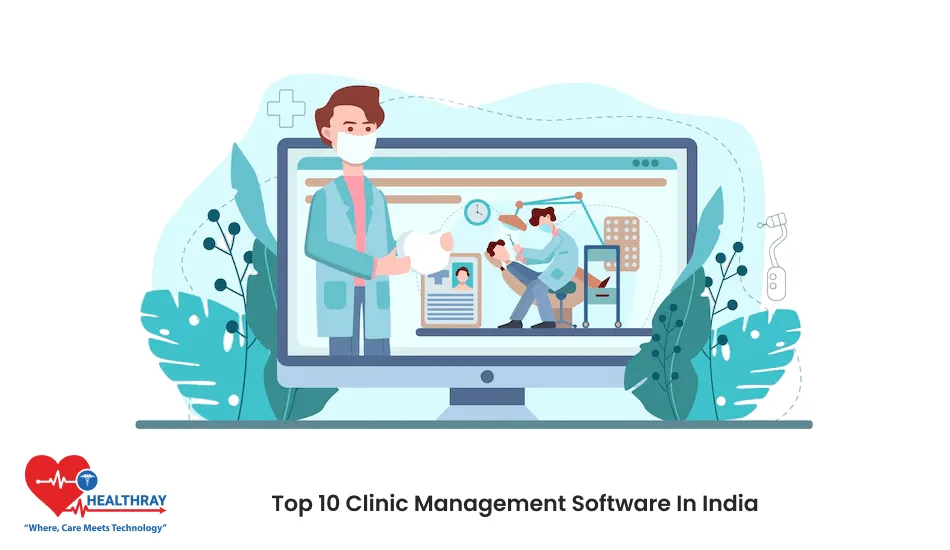How are Electronic Health Records (EHRs) reshaping patient care? The healthcare field is undergoing rapid changes, with EHRs becoming a core part of how hospitals manage patient data, treatment plans, and communication between care teams. With growing technological advancements, EHRs aren’t just a digital version of patient files; they’re evolving into a powerful tool that helps hospitals deliver better, faster, and safer care.
This post explores how EHR Software is shaping the future of patient care. From cutting-edge developments in artificial intelligence to the potential for smoother workflows and better data security, we’ll cover everything healthcare professionals and administrators need to know. By the end, you’ll see why EHRs are more than a trend—they’re a transformative force in modern healthcare.
Advancements in EHR Technology

Electronic Health Records (EHRs) have come a long way from their basic digital beginnings. Today’s EHR systems are being re-engineered to go beyond simple record-keeping, integrating advanced features that significantly improve healthcare delivery. New developments are paving the way for smarter, more intuitive EHRs that support healthcare professionals in real-time decision-making.
Recent advancements have focused on interoperability and data accessibility. Modern EHR systems are designed to seamlessly share data across different healthcare providers, ensuring that a patient’s information flows smoothly between hospitals, specialists, and primary care providers. This is crucial in eliminating redundant tests, reducing delays, and providing a more holistic view of a patient’s medical history.
Another key area of advancement is user experience (UX). Recognizing the need for healthcare providers to access critical information quickly, many EHRs are being optimized for speed, simplicity, and ease of navigation. Features like intuitive dashboards, predictive search, and voice recognition are helping clinicians spend less time navigating systems and more time with patients.
EHRs are also now supporting integrated care delivery by connecting with telemedicine platforms, wearable health devices, and remote monitoring tools. This allows for real-time health monitoring and proactive interventions. For instance, EHRs can now alert doctors if a patient’s vital signs fall outside safe limits, enabling swift action.
As EHR technology continues to evolve, it’s clear that these advancements are not only making record-keeping more efficient but are also enhancing the entire ecosystem of patient care. With each innovation, EHRs are positioning themselves as indispensable tools for a more responsive and connected healthcare environment.
Integration with Artificial Intelligence
Artificial Intelligence (AI) is transforming Electronic Health Records (EHRs) from simple data repositories into dynamic tools that actively enhance patient care. By incorporating AI, EHR systems are becoming smarter, supporting healthcare providers with data-driven insights that can lead to better outcomes.
One of the most promising applications of AI in EHRs is predictive analytics. By analyzing patterns in patient data, AI algorithms can forecast potential health risks, helping doctors intervene earlier. For instance, AI can flag patients who are at higher risk of complications or readmission based on their history, vital signs, and lab results. This proactive approach enables personalized care plans tailored to the unique risks each patient faces.
Another area where AI shines is in clinical decision support. EHRs equipped with AI can provide real-time recommendations to doctors based on the latest medical research and guidelines. Imagine a scenario where a doctor enters symptoms into an EHR, and the system quickly suggests potential diagnoses, tests, or treatment options. This isn’t about replacing doctors but empowering them with faster access to relevant information that might otherwise take hours to sift through manually.
Natural Language Processing (NLP) is also making its mark, helping EHRs to process unstructured data like doctors’ notes, imaging reports, and patient histories. In a traditional EHR, this information might be stored as text without much utility. But with NLP, EHRs can “read” these notes, identify key medical terms, and cross-reference them with structured data to create a more complete picture of the patient’s health. This capability helps bridge the gap between qualitative insights and quantitative data.
The integration of AI into EHRs is helping hospitals move toward a more holistic approach to patient care. By improving diagnostic accuracy, enabling earlier interventions, and reducing time spent on administrative tasks, AI-driven EHRs are freeing healthcare providers to focus more on their patients. As AI continues to evolve, its potential to transform EHRs and healthcare delivery will only grow, making it an essential component in the future of patient care.
Impact on Patient Care
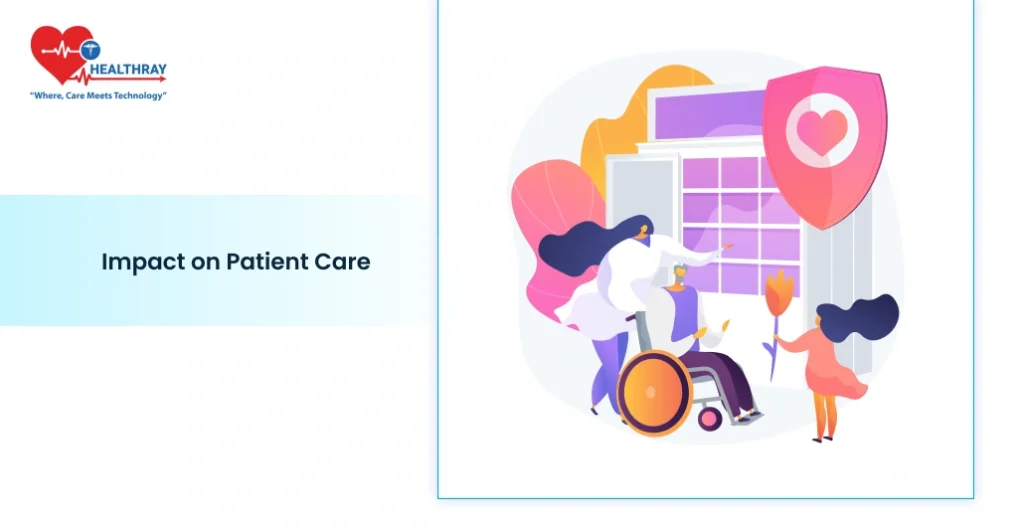
The impact of Electronic Health Records (EHRs) on patient care has been profound. By centralizing patient information and making it accessible to healthcare providers across departments, EHRs enhance the quality, safety, and coordination of care patients receive.
One of the most direct ways EHRs improve patient care is through enhanced accessibility of medical records. With EHRs, a patient’s full medical history—diagnoses, medications, allergies, and previous treatments—is available at the click of a button. This level of access helps doctors make informed decisions quickly, especially in urgent situations where every second counts. Gone are the days of manually tracking down paper records or relying on a patient’s memory for crucial health details.
EHRs also play a crucial role in reducing medical errors. For example, automated alerts can notify providers of potential drug interactions when a new medication is prescribed. This layer of protection is vital for patient safety, particularly in hospitals with high patient volumes and multiple care providers. Additionally, EHRs can standardize care protocols by guiding clinicians with best practices for specific conditions, which reduces variability in patient treatment and ensures a consistent standard of care.
Another benefit is the improvement in communication and collaboration among healthcare teams. In complex cases requiring multiple specialists, EHRs provide a unified platform where everyone involved can review the patient’s status, updates, and treatment notes in real-time. This seamless communication minimizes misunderstandings and ensures that all members of the care team are aligned on the patient’s needs and progress.
In the broader scope, EHRs contribute to preventive care by helping identify patients due for screenings, vaccinations, or follow-up appointments. For example, an EHR might alert a doctor that a patient is overdue for a diabetes screening or a routine vaccination, enabling proactive care. This kind of preventive intervention can significantly improve patient outcomes and reduce the need for more intensive treatments down the line.
With these improvements, EHRs are redefining the patient experience, making healthcare not just reactive but proactive, consistent, and safer. As hospitals continue to refine and expand their EHR capabilities, the ultimate beneficiary is the patient, receiving care that is both high-quality and personalized.
Enhancing Operational Efficiency
Electronic Health Records (EHRs) are not only improving patient care but also making hospital operations more efficient. By automating and streamlining many administrative processes, EHRs free up time for healthcare providers and staff to focus more on patient-centered tasks and less on paperwork.
One of the primary ways EHRs enhance efficiency is through reduced documentation time. Traditionally, doctors and nurses spent hours filling out patient charts and updating records manually. With EHRs, much of this documentation is digitized and can even be automated. Features like voice recognition and templated entry fields allow providers to enter data quickly, cutting down on the time spent on administrative tasks. As a result, they have more time to spend on direct patient care, improving both productivity and job satisfaction.
EHRs also facilitate faster and more accurate billing. In traditional setups, errors in billing or coding could delay payments and create bottlenecks in hospital revenue cycles. EHRs help streamline this by automatically tracking services rendered, medications prescribed, and tests conducted, which ensures accurate billing records. This not only reduces errors but also speeds up the reimbursement process, an essential factor in maintaining financial stability for hospitals.
Another key operational benefit is inventory and resource management. Many EHR systems now integrate with supply chain management, which helps hospitals keep track of their inventories of medications, equipment, and other resources. For example, an EHR might alert staff when supplies are running low or when a specific medication is about to expire. This ensures that resources are used efficiently, reducing waste and minimizing the risk of stockouts.
EHRs also improve communication and task coordination within hospital teams. For instance, when a patient is admitted, the EHR can immediately notify relevant departments, ensuring that the patient receives timely care. Care teams can update one another in real time, so no critical information slips through the cracks. This is especially beneficial in large hospital settings where multiple departments must collaborate to deliver comprehensive care.
By making operations smoother and more efficient, EHRs help hospitals run like well-oiled machines, reducing the likelihood of errors, improving communication, and ultimately enhancing the patient experience. For healthcare administrators and staff, these operational efficiencies mean less time spent on logistics and more time focused on what matters most: patient health and satisfaction.
Data Security and Privacy Concerns
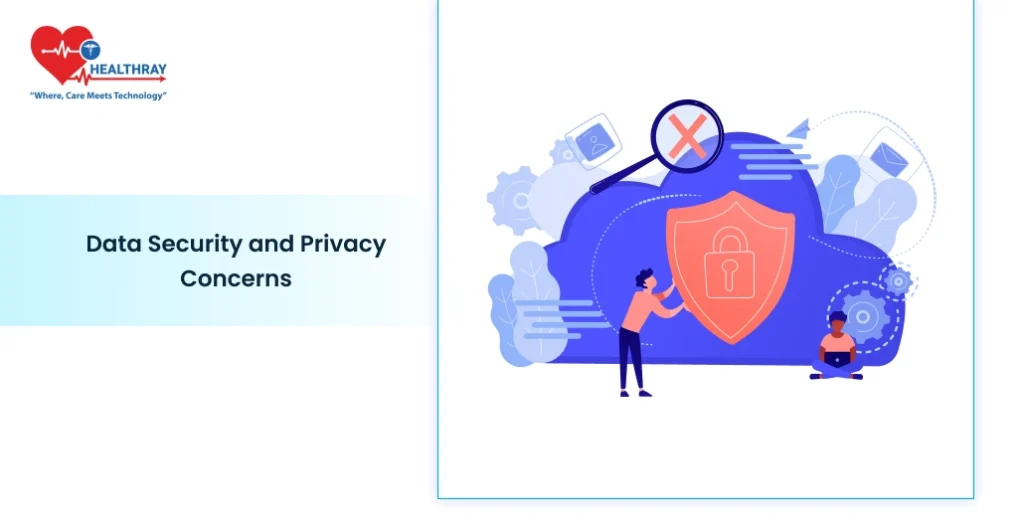
With Electronic Health Records (EHRs) centralizing vast amounts of sensitive patient data, ensuring security and privacy has become a top priority for healthcare providers. While EHRs streamline access to patient information, they also open up potential vulnerabilities, making robust data protection crucial for hospitals and other healthcare facilities.
Protecting patient confidentiality is paramount. EHR systems store highly personal data, from medical histories and treatment plans to billing information. To safeguard this, EHR systems employ a range of security protocols, including encryption, access controls, and two-factor authentication. Encryption ensures that even if data is intercepted, it remains unreadable to unauthorized users. Access controls further protect data by allowing only authorized personnel to view or modify sensitive information, minimizing the risk of breaches from within.
Compliance with healthcare regulations like HIPAA (Health Insurance Portability and Accountability Act) in the United States is another critical component. HIPAA mandates strict standards for handling patient data, and non-compliance can lead to severe financial penalties and damage to an organization’s reputation. EHR providers are required to design their systems to meet these regulatory requirements, giving healthcare facilities peace of mind that their systems align with legal standards for data privacy and security.
Hospitals also face the challenge of protecting data from cyberattacks, such as ransomware and phishing. These attacks have been on the rise, with hackers targeting healthcare facilities that rely on access to their systems for daily operations. As a response, hospitals are investing in cybersecurity measures like firewalls, intrusion detection systems, and staff training programs to recognize phishing attempts and other cyber threats. Regular security audits and system updates are also critical for staying ahead of potential vulnerabilities.
In addition to cybersecurity, patient trust is an essential factor in data privacy. Patients need to feel confident that their sensitive health information is being handled responsibly. When hospitals implement strong data security measures and communicate these efforts to their patients, it strengthens trust and reinforces the patient-provider relationship. For many patients, knowing that their data is safe can improve their overall experience with healthcare providers.
While EHRs bring undeniable benefits to patient care, they also require a proactive approach to data protection. By prioritizing security and privacy, hospitals can ensure that the move toward digital records supports, rather than compromises, patient trust and safety.
Implementation Challenges and Solutions
Transitioning to advanced Electronic Health Records (EHR) systems brings numerous benefits, but the journey isn’t without challenges. For hospitals, implementing and optimizing EHR systems can be a complex process that requires strategic planning, significant resources, and time. However, understanding common obstacles and solutions can help hospitals navigate this transition more smoothly.
One of the primary challenges is the cost of implementation. Setting up an EHR system involves substantial expenses, including software licensing fees, hardware investments, and training costs. For many hospitals, especially smaller facilities with limited budgets, these expenses can be a barrier. A potential solution is to explore government incentives or funding options available for healthcare organizations implementing EHR systems. Additionally, choosing scalable EHR solutions allows hospitals to expand features over time rather than bearing the full cost upfront.
Staff training and adoption also pose a significant challenge. Even the most advanced EHR system won’t be effective if the healthcare providers using it don’t understand its features. Medical staff often have varied levels of comfort with technology, and learning a new system can seem daunting, especially when it disrupts routine workflows. To address this, hospitals are implementing comprehensive training programs that provide hands-on sessions, ongoing support, and user-friendly training resources. Some hospitals even appoint “super-users” within each department—staff members trained extensively on the system who can assist their colleagues in day-to-day usage.
Another common hurdle is data migration and integration with existing systems. Moving patient data from legacy systems to a new EHR platform can be time-consuming and requires careful planning to avoid data loss or corruption. Furthermore, hospitals often use multiple systems for various departments, and ensuring these systems can communicate with the new EHR requires technical expertise. To manage this, hospitals may work with EHR vendors offering data migration services and custom integration solutions that connect all necessary systems, ensuring smooth and secure data flow across the organization.
Workflow disruptions during implementation are another challenge. As EHR systems are introduced, there’s often a temporary dip in productivity as staff adjust to the new processes. To mitigate this, hospitals sometimes use phased rollouts, gradually implementing the EHR system across departments. This allows staff to adapt without overwhelming the entire hospital operation. Continuous feedback collection during the transition also enables quick adjustments to address any emerging issues.
In the face of these challenges, hospitals that approach EHR implementation with a flexible, proactive mindset can maximize the benefits of their new systems. By investing in adequate training, securing financial support, and carefully planning the integration process, hospitals can overcome these obstacles and pave the way for a more efficient, connected, and patient-centered approach to healthcare.
Future Outlook
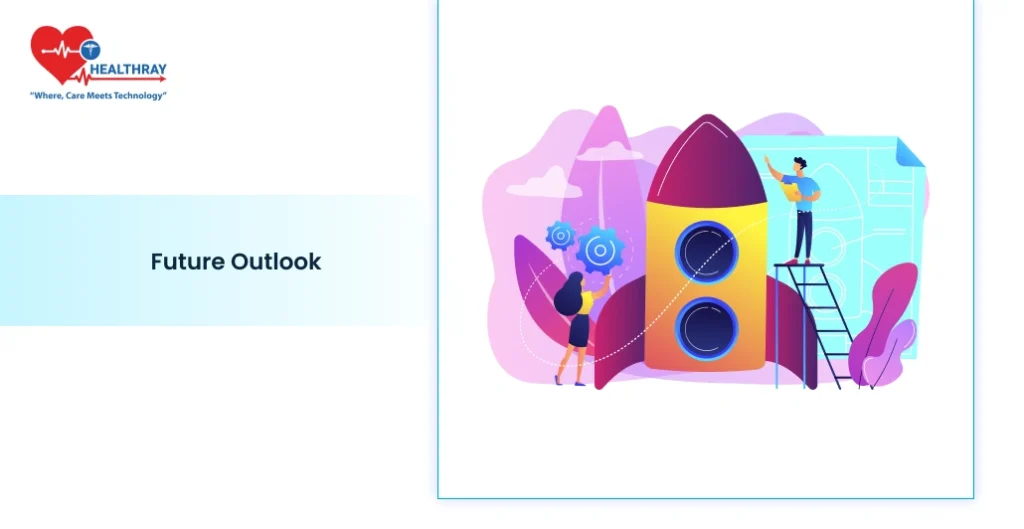
The future of Electronic Health Records (EHRs) holds exciting possibilities as technology continues to advance. EHRs are poised to go beyond their current role, evolving from basic digital record systems into comprehensive platforms that integrate seamlessly with other cutting-edge tools in healthcare. This shift promises a future where EHRs play an even more active role in improving patient outcomes, streamlining hospital operations, and enabling personalized medicine.
One significant trend on the horizon is the integration of EHRs with wearable technology and remote monitoring devices. As patients increasingly use health trackers and devices that monitor heart rate, blood pressure, and other vital signs, EHRs could automatically receive and store this data. This continuous flow of information would give healthcare providers a real-time view of a patient’s health, allowing for proactive interventions and better management of chronic conditions without the need for frequent in-person visits.
Another anticipated development is the incorporation of machine learning and advanced AI algorithms. In the future, EHRs will likely use AI to analyze large datasets across populations, identifying health trends and risk factors that could inform public health policies or hospital practices. For individual patient care, AI-driven EHRs may suggest more personalized treatment options based on patterns found in similar cases, moving toward truly individualized medicine.
Blockchain technology is also expected to play a role in the future of EHRs. Blockchain’s decentralized, secure framework could address many of the data privacy concerns currently associated with EHRs, allowing patients more control over who accesses their health information. With blockchain, patients could share specific parts of their records with healthcare providers, insurers, or researchers without compromising their full medical history, enhancing both security and patient autonomy.
Additionally, interoperability is likely to become a core focus. As healthcare providers increasingly demand EHRs that “talk” to one another across systems and organizations, future EHR platforms will prioritize compatibility and data-sharing capabilities. Imagine a healthcare ecosystem where EHRs connect across hospitals, clinics, and labs, allowing seamless transitions in patient care and eliminating the fragmentation that currently plagues many healthcare systems.
The future of EHRs looks bright, with a strong potential to transform healthcare into a more patient-centered, efficient, and secure field. These advancements promise to make EHRs indispensable tools for healthcare professionals, helping them deliver more timely, accurate, and personalized care. For hospitals, embracing this future means staying ahead in an industry where patient needs and technological possibilities are evolving every day.
Conclusion
Electronic Health Records (EHRs) are reshaping the future of patient care, bringing powerful tools to hospitals that enhance care quality, improve operational efficiency, and help safeguard patient data. These digital systems support healthcare providers in making faster, more informed decisions while also offering patients a greater sense of ownership over their healthcare experience. By integrating with cutting-edge technologies like AI and telemedicine, Hospital Management Systems are becoming an integral part of a connected, proactive healthcare environment.
